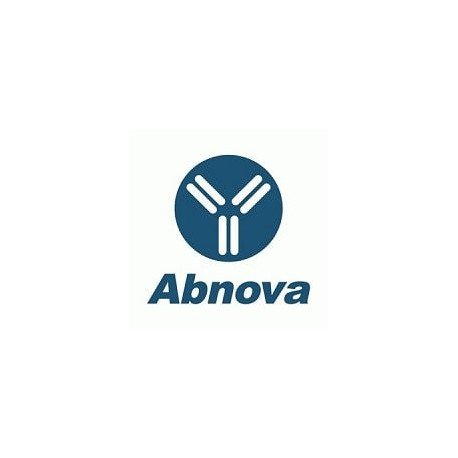Cart 0 Product Products (empty)
No products
To be determined Shipping
0,00 € Total
Prices are tax excluded
Product successfully added to your shopping cart
Quantity
Total
There are 0 items in your cart. There is 1 item in your cart.
Total products (tax excl.)
Total shipping (tax excl.) To be determined
Total (tax excl.)
Data sheet of CTNNB1 (phospho Y86) polyclonal antibody
| Brand | Abnova |
| Product type | Primary antibodies |
| Reactivity | Human,Mouse,Rat |
| Host species | Rabbit |
| Applications | WB,IP,ELISA |
More info about CTNNB1 (phospho Y86) polyclonal antibody
| Brand: | Abnova |
| Reference: | PAB7925 |
| Product name: | CTNNB1 (phospho Y86) polyclonal antibody |
| Product description: | Rabbit polyclonal antibody raised against synthetic phosphopeptide of CTNNB1. |
| Gene id: | 1499 |
| Gene name: | CTNNB1 |
| Gene alias: | CTNNB|DKFZp686D02253|FLJ25606|FLJ37923 |
| Gene description: | catenin (cadherin-associated protein), beta 1, 88kDa |
| Immunogen: | Synthetic phosphopeptide (conjugated with KLH) corresponding to residues surrounding Y86 of human CTNNB1. |
| Form: | Liquid |
| Recommend dilutions: | ELISA (1:2000) Western Blot (1:1000) The optimal working dilution should be determined by the end user. |
| Storage buffer: | In PBS (50% glycerol, 1 mg/mL BSA, 0.05% sodium azide) |
| Storage instruction: | Store at -20°C. Aliquot to avoid repeated freezing and thawing. |
| Quality control testing: | Antibody Reactive Against Synthetic Peptide. |
| Note: | This product contains sodium azide: a POISONOUS AND HAZARDOUS SUBSTANCE which should be handled by trained staff only. |
| Product type: | Primary antibodies |
| Host species: | Rabbit |
| Antigen species / target species: | Human |
| Specificity: | This peptide sequence is highly conserved in rat and mouse beta-Catenin. |
| Reactivity: | Human,Mouse,Rat |
| Application image: |  |
| Application image note: | Western blot analysis of CTNNB1 immunoprecipitated from lysates prepared from A-431 cells treated with pervanadate. The immunoprecipitation was performed using mouse CTNNB1 monoclonal antibody. The blots were probed with CTNNB1 (phospho Y86) polyclonal antibody (Cat # PAB7925). The immunoprecipitated CTNNB1 was untreated (lane 1) or treated with alkaline phosphatase (lane 2) then probed with the antibodies. |
| Applications: | WB,IP,ELISA |
| Shipping condition: | Dry Ice |
| Publications: | Regulation of E-cadherin/Catenin association by tyrosine phosphorylation.Roura S, Miravet S, Piedra J, Garcia de Herreros A, Dunach M. J Biol Chem. 1999 Dec 17;274(51):36734-40. |


